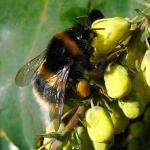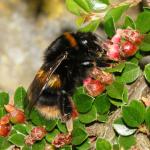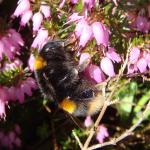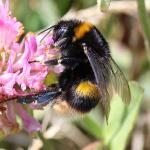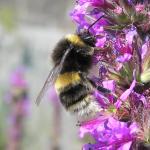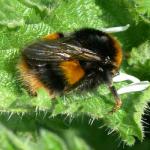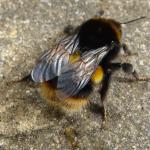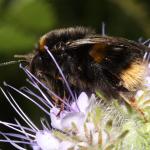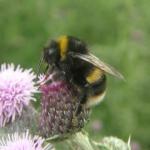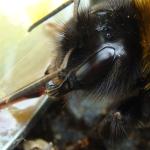Keys and general biology are found in Sladen (1912), Free & Butler (1959), Alford (1975), Prŷs-Jones & Corbet (1991), Edwards, M. & Jenner (2005), Benton (2006), Macdonald & Nisbet (2006). Whilst males and queens of this species are readily separated (at least in the British form) from those of B. lucorum agg., workers are rather more difficult. Characters on the sting sheath (queens and workers) are discernible with care and fresh workers often have a narrow band of brownish hairs at the base of the white ‘tail’. However, as B. terrestris is such a widespread and frequently found species, it is best not to record distributions based on workers, but to target the distinctive queens (in spring) and males (in mid to late summer). Captive nests, not of the British sub-species, are now used by commercial tomato and fruit growers. Unfortunately, some sexuals may escape and inter-breed with wild bees. Bees from commercial nests are like B. lucorum agg., lacking the deeper yellow bands and darker tail markings of the British sub-species.
The main distribution covers England,Wales, Ireland and southern and central Scotland. It is expanding its range northward into the Highland Region of Scotland at the present time (Macdonald & Nisbet 2006). It is widespread in Europe, middle and northern latitudes of Asia, eastwards to northern Mongolia (Løken 1973). It is also found in northern Africa at the higher altitudes of the Atlas Mountains. Introductions as a result of escapes from commercial use have resulted in establishment in Australasia and South America.The species was deliberately introduced to New Zealand in the late 1800s.
This bee is not regarded as being scarce or threatened.
It may be encountered almost anywhere in lowland Britain or Ireland.
Partially bivoltine, with a winter generation under favourable circumstances of available forage in gardens and relatively warm winters, such as between the years 1992 and 2005. Normally queens are found between February and April, according to latitude, males between July and October. Records of workers in January to March are common in southern England. Polylectic. This species probably has the widest diet of any British bumblebee.
Nests are underground in old mouse or vole nests. Nests are large, with over 500 individuals in many instances.
Visits are made to a wide variety of flowers, both for pollen and nectar.
The cuckoo-bee Bombus vestalis is associated with B. terrestris (see Atlas Part 5).
2009


